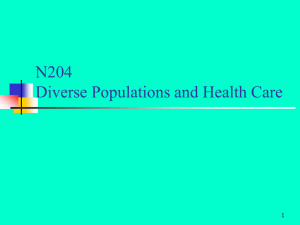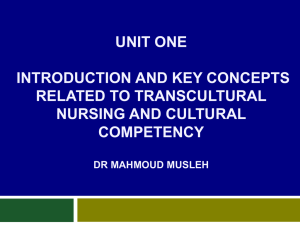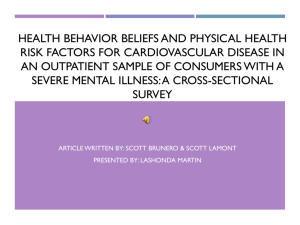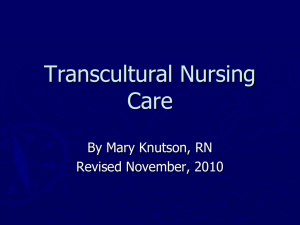Culture in the Curriculu62
advertisement
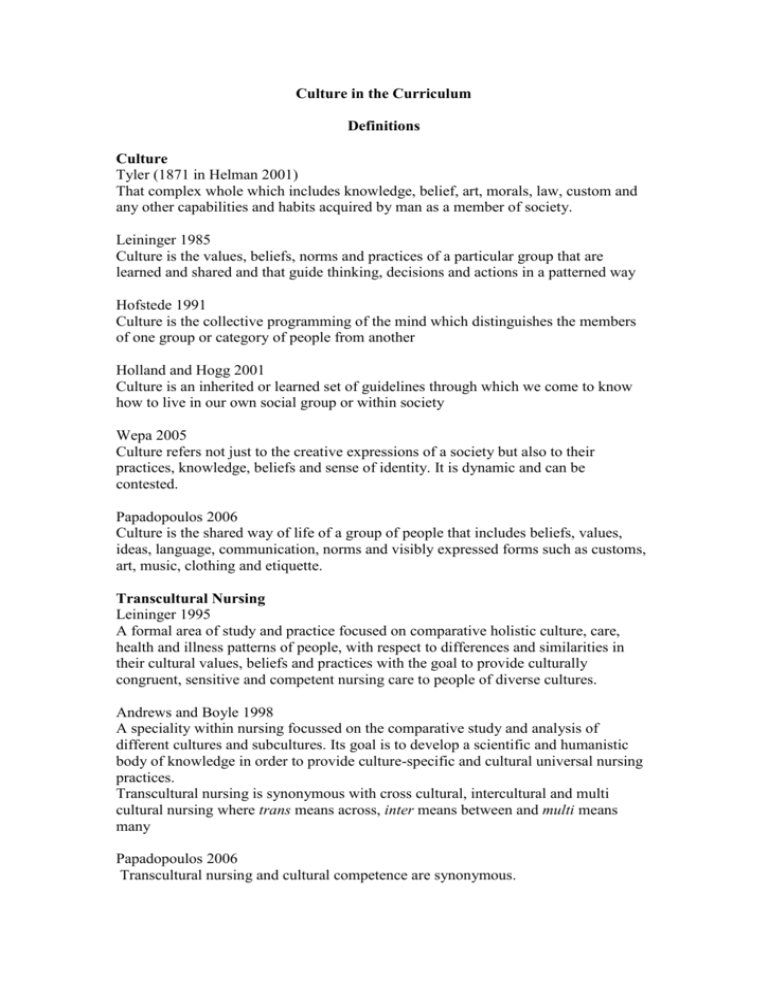
Culture in the Curriculum Definitions Culture Tyler (1871 in Helman 2001) That complex whole which includes knowledge, belief, art, morals, law, custom and any other capabilities and habits acquired by man as a member of society. Leininger 1985 Culture is the values, beliefs, norms and practices of a particular group that are learned and shared and that guide thinking, decisions and actions in a patterned way Hofstede 1991 Culture is the collective programming of the mind which distinguishes the members of one group or category of people from another Holland and Hogg 2001 Culture is an inherited or learned set of guidelines through which we come to know how to live in our own social group or within society Wepa 2005 Culture refers not just to the creative expressions of a society but also to their practices, knowledge, beliefs and sense of identity. It is dynamic and can be contested. Papadopoulos 2006 Culture is the shared way of life of a group of people that includes beliefs, values, ideas, language, communication, norms and visibly expressed forms such as customs, art, music, clothing and etiquette. Transcultural Nursing Leininger 1995 A formal area of study and practice focused on comparative holistic culture, care, health and illness patterns of people, with respect to differences and similarities in their cultural values, beliefs and practices with the goal to provide culturally congruent, sensitive and competent nursing care to people of diverse cultures. Andrews and Boyle 1998 A speciality within nursing focussed on the comparative study and analysis of different cultures and subcultures. Its goal is to develop a scientific and humanistic body of knowledge in order to provide culture-specific and cultural universal nursing practices. Transcultural nursing is synonymous with cross cultural, intercultural and multi cultural nursing where trans means across, inter means between and multi means many Papadopoulos 2006 Transcultural nursing and cultural competence are synonymous. Multicultralism Payne 1997 in Wepa 2005 Means affirming the reality of cultural diversity, allowing individuals to keep much that is distinctive about their cultural traditions in society, thus opposing a single, dominant culture. DeSouza in Wepa 2006 Holds that people have the right to retain their own culture and have access to society and services without being disadvantaged Andrews and Boyle 1998 Encourages us to try to understand other cultures and traditional practices within the sociocultural context in which they occur and fosters the understanding that there is a range of ways to live and solve problems Paige 1993 The capacity to integrate alternate cultural frames of reference into one’s life and function effectively in two or more cultures Cultural awareness Papps 2006 A beginning step toward understanding that there is a difference Campinha-Bacote 1995 Includes the process of becoming sensitive to interactions with other cultural and ethnic groups and requires the nurse to examine his or her biases and prejudices towards other cultural and ethnic groups Lister 1999 The students is able to describe how beliefs, values and personal/political power are shaped by culture and that different cultures, subcultures and ethnicities may validate different beliefs and values Cultural competence Campinha-Bacote 1995 A set of congruent behaviours, attitudes and policies that come together in a system, agency or among professionals and enables that system, agency or those professionals to work effectively in a cross-cultural situation American Academy of Nursing 1995 A complex integration of knowledge, attitudes and skills that enhances cross cultural communication and appropriate effective interactions with others Rew et al 2003 Cultural competence can be conceptualised as consisting of 4 components Cultural awareness the affective domain Cultural sensitivity the attitudinal dimension Cultural knowledge the cognitive domain Cultural skills the behavioural dimension Lister 1999 The student provides or facilitates care which respects the values, beliefs and practices of the client, and which addresses disadvantages arising from the client’s position in relation to networks of power

